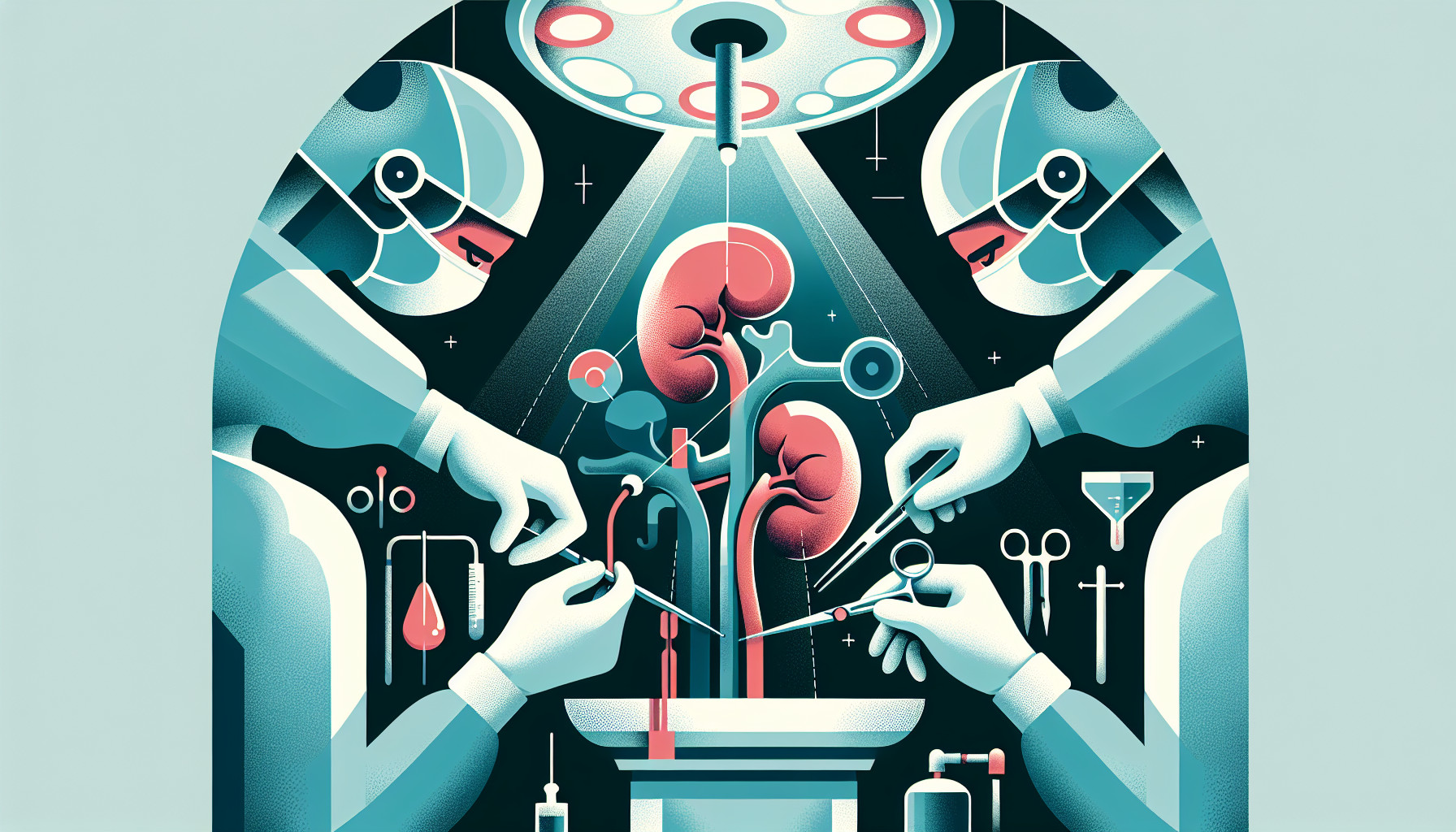Our Summary
This study compared two different methods of pain management after laparoscopic nephrectomy (a surgical procedure to remove a kidney). The two methods, called erector spinae plane block and quadratus lumborum block, were administered to 110 patients in a hospital in Beijing, China. The main goal of the study was to see which method resulted in less use of a pain medication called sufentanil in the first 24 hours after surgery. The researchers also looked at the patients’ reported pain levels, their sleep quality, and their overall recovery quality.
The results showed that patients who received the erector spinae plane block used less sufentanil, reported less pain, had better sleep quality, and a better recovery quality than those who received the quadratus lumborum block. There were no adverse events related to either procedure. Based on these findings, the researchers concluded that the erector spinae plane block is a better method for managing pain after laparoscopic nephrectomy.
FAQs
- What were the two methods of pain management compared in the study after laparoscopic nephrectomy?
- What were the key findings of the study comparing erector spinae plane block and quadratus lumborum block for post-surgery pain management?
- Were there any adverse events related to either the erector spinae plane block or the quadratus lumborum block procedures?
Doctor’s Tip
A helpful tip a doctor might tell a patient about laparoscopic nephrectomy is to discuss the option of receiving an erector spinae plane block for pain management after surgery. This method has been shown to result in less use of pain medication, lower pain levels, better sleep quality, and overall better recovery quality compared to other pain management methods. It is important for patients to have a discussion with their healthcare provider about the best pain management options for their individual needs.
Suitable For
Patients who are typically recommended for laparoscopic nephrectomy are those who have conditions such as kidney cancer, kidney stones, or kidney damage that cannot be treated with other methods. This procedure is minimally invasive and offers a faster recovery time compared to traditional open surgery, making it a preferred option for many patients.
Timeline
Before laparoscopic nephrectomy, a patient would typically undergo pre-operative evaluations, such as blood tests, imaging studies, and consultations with the surgical team. They would also receive instructions on fasting before the surgery and guidance on medications to avoid leading up to the procedure.
On the day of the surgery, the patient would arrive at the hospital, undergo anesthesia induction, and then the laparoscopic nephrectomy procedure would be performed. After the surgery, the patient would be monitored in the recovery room and then transferred to a hospital room for further observation.
After laparoscopic nephrectomy, the patient would likely experience pain, discomfort, and potential side effects from the surgery. Pain management would be provided by the medical team, and the patient would be monitored for any complications or signs of infection. The patient would gradually be encouraged to move, walk, and resume normal activities as they recover.
In the case of this study, patients received either the erector spinae plane block or quadratus lumborum block for pain management after laparoscopic nephrectomy. The results showed that the erector spinae plane block resulted in less use of pain medication, lower reported pain levels, better sleep quality, and overall recovery quality compared to the quadratus lumborum block. This suggests that the erector spinae plane block may be a more effective method for managing pain after this type of surgery.
What to Ask Your Doctor
- What are the potential risks and benefits of undergoing a laparoscopic nephrectomy procedure?
- How does the erector spinae plane block method compare to other pain management options for post-surgical pain relief?
- Will I need to take additional pain medications after the procedure, and if so, what are the potential side effects?
- How long is the typical recovery time for a laparoscopic nephrectomy, and are there any specific activities I should avoid during this time?
- What is the success rate of laparoscopic nephrectomy in terms of removing the kidney and treating the underlying condition?
- Are there any dietary or lifestyle changes I should make before or after the procedure to improve my recovery?
- How will my kidney function be monitored after the surgery, and what signs should I watch for that may indicate a complication?
- Are there any alternative treatment options to consider before proceeding with a laparoscopic nephrectomy?
- What is the experience of the surgical team in performing laparoscopic nephrectomy procedures, and how many have they successfully completed?
- How can I best prepare myself both physically and mentally for the laparoscopic nephrectomy procedure?
Reference
Authors: Zhang Z, Kong H, Li Y, Xu ZZ, Li X, Ma JH, Wang DX. Journal: J Clin Anesth. 2024 Sep;96:111466. doi: 10.1016/j.jclinane.2024.111466. Epub 2024 Apr 26. PMID: 38677191
